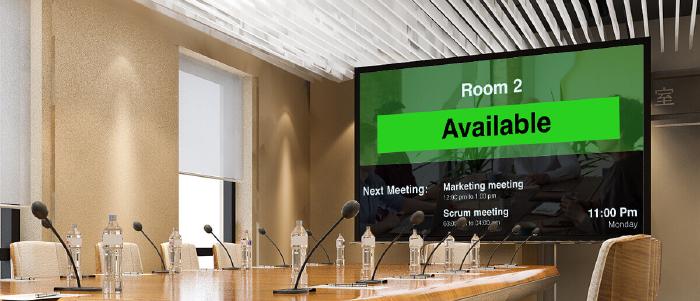
Dec 29 2021
10 min read
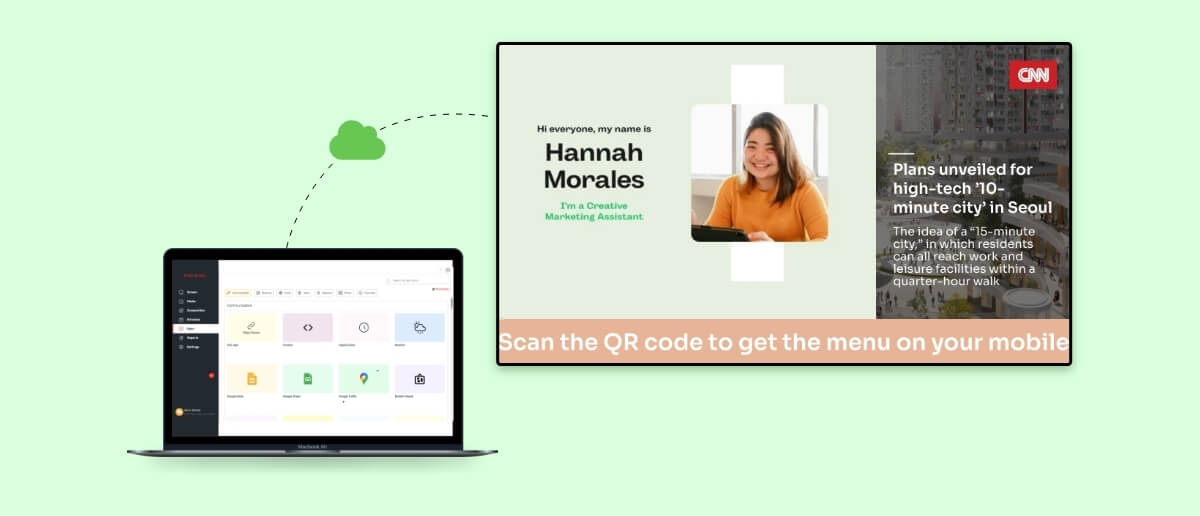
A content management system, or in short CMS, is any software application that allows users to create, edit, and publish content on a digital platform.
All types of content (texts, images, videos) you see on a digital medium have to be processed with the help of computer codes. So how does a user with zero coding knowledge publish their content? That is where the content management system comes into play.
In this blog, you will get answers to:
In the much broader sense, ‘content management system’ is an umbrella term that includes all kinds of applications that allow users to:
But, in this blog, we will restrict our discussion to only digital signage content management systems (CMS).
A Digital Signage CMS (Content Management System) is a platform designed for managing and orchestrating content displayed on digital signs, smart signage, and screens. This technology empowers users to create, schedule, and update content remotely, streamlining the process of presenting information, advertisements, or messages across diverse displays.
A digital signage setup has two primary components:
The digital signage screen & hardware
The digital signage software
Here are some must-have features that users should look for:
The primary function of any content management system for digital signage is that it should allow the users to bring out their contents on the screen. Your CMS dashboard will have an option to ‘Upload’ files (images, videos, etc.) either from the local storage of your computer or from online cloud storage. This is the very least your CMS should allow you to do.
Further, depending on the software service provider that you choose, your CMS can have additional features such as:
Applications to design content:
DIY design tools are now in huge demand. People want to be in more control of what they show on their screens. That is why some of the best digital signage software provide in-built design apps that let users create different types of content for digital signage.
For example, the Pickcel digital signage software has the integrated Canva design app and the three largest free stock image libraries- Unsplash, Pexel & Pixabay.
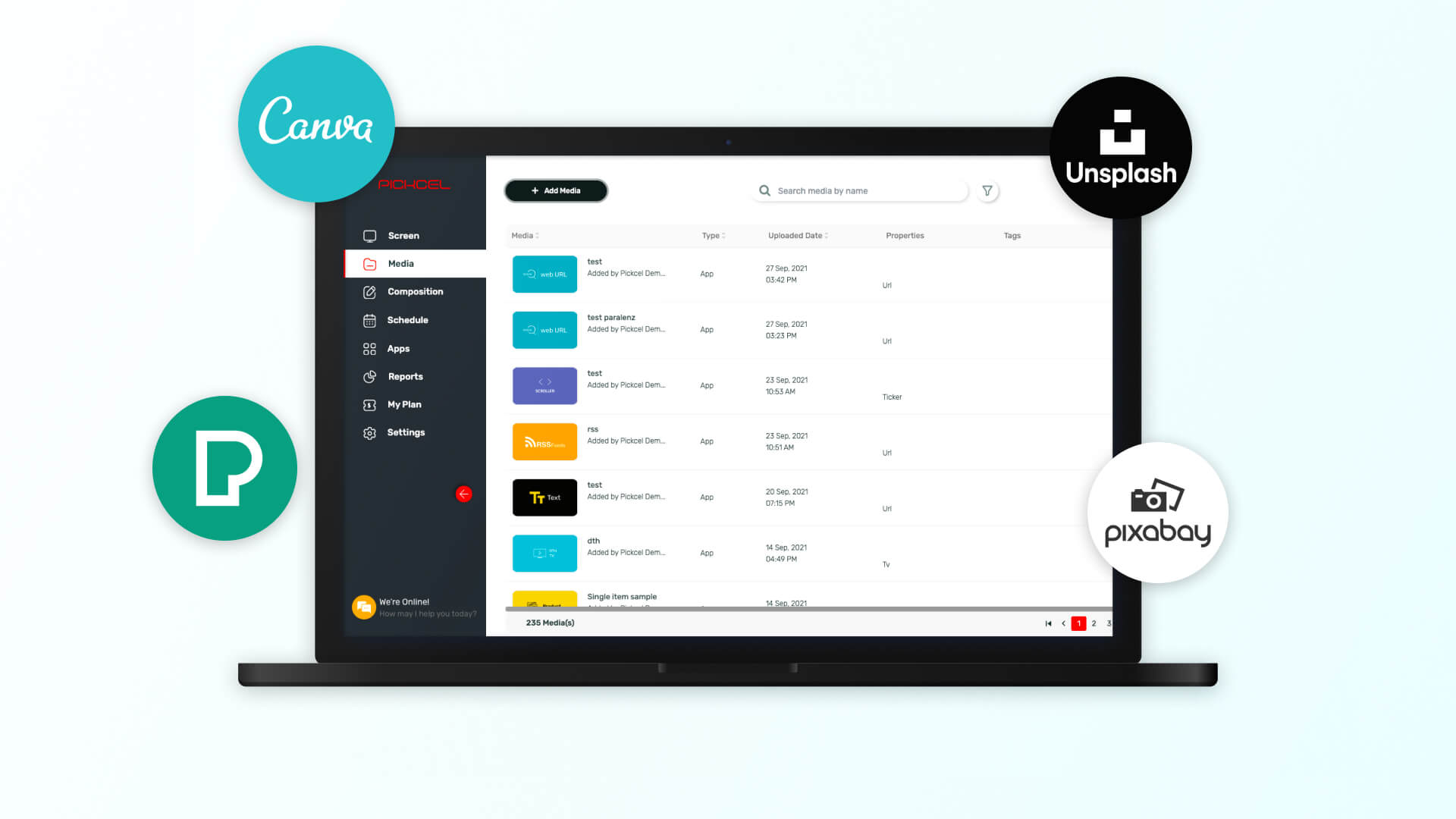
Create Compositions & Playlists:
When your content is all business, your CMS should let you make the most of screens to display. That means playing multiple media simultaneously in different areas of the same screen.
Using a digital signage CMS, users can also dictate the sequence in which the contents will play (what image/text/video will play first, what will follow, and how long each media will play).
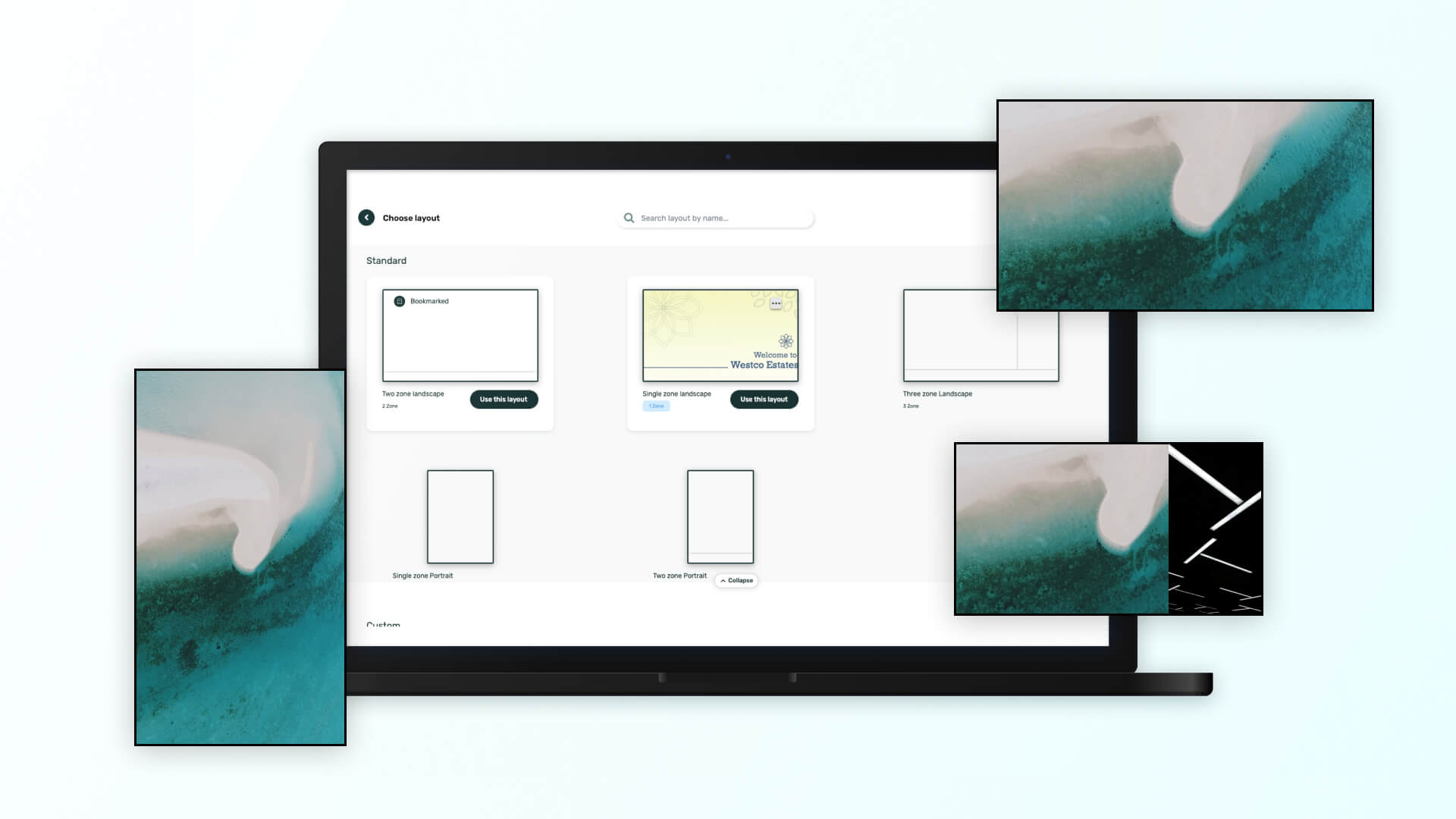
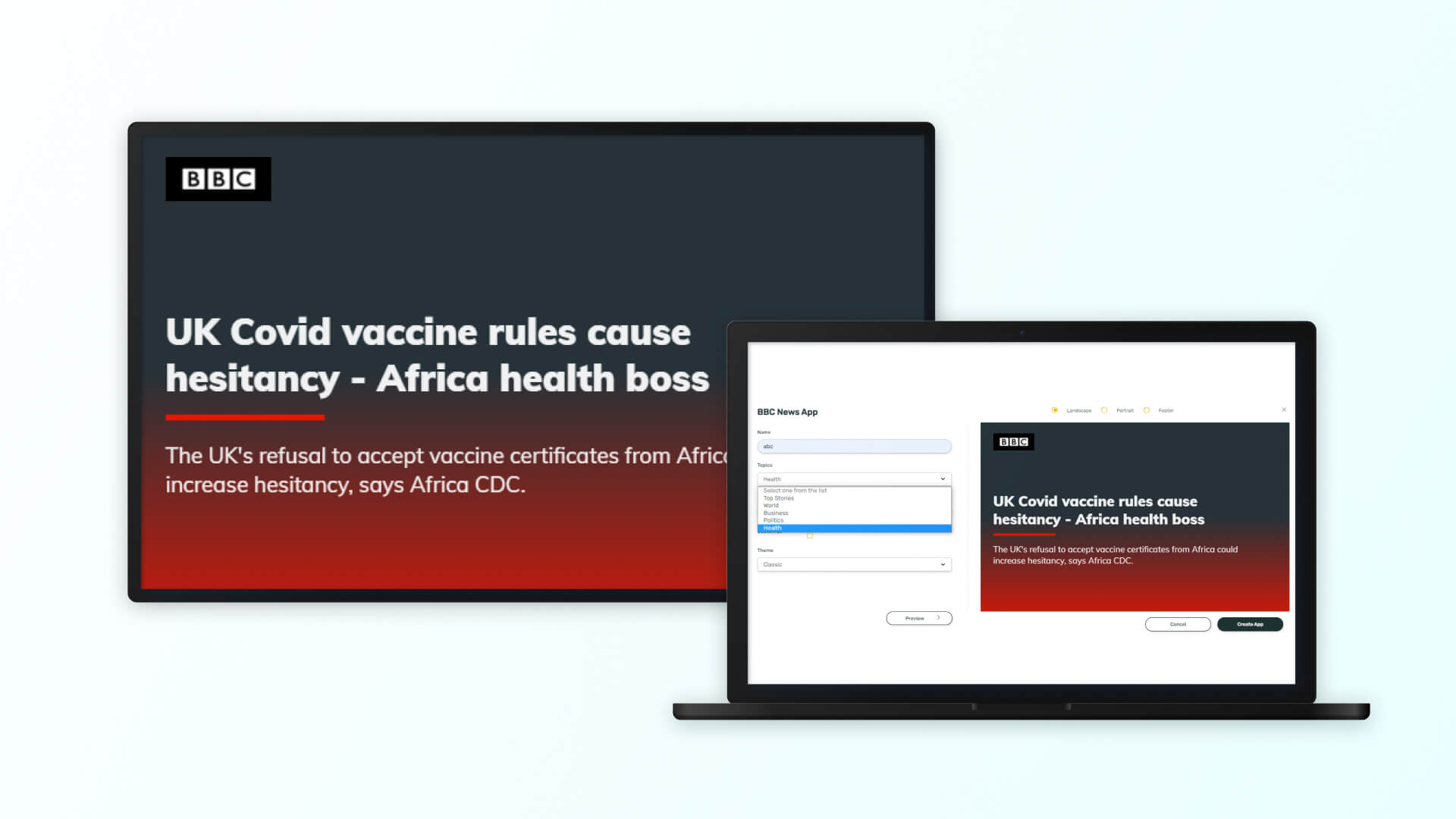
A top-tier digital signage CMS should feature advanced capabilities for broadcasting live content, including news, social media feeds, weather updates, sports, RSS feeds, and virtual meetings. This functionality ensures that your digital signage remains dynamic and up-to-date with real-time information.
Typically, the CMS dashboard will include an integrated app store offering a variety of live streaming applications .
Integrating apps like the BBC News or CNN allows you to display live news headlines, keeping your audience informed with the latest developments. Such real-time content delivery ensures that your screens are always displaying fresh and engaging information.
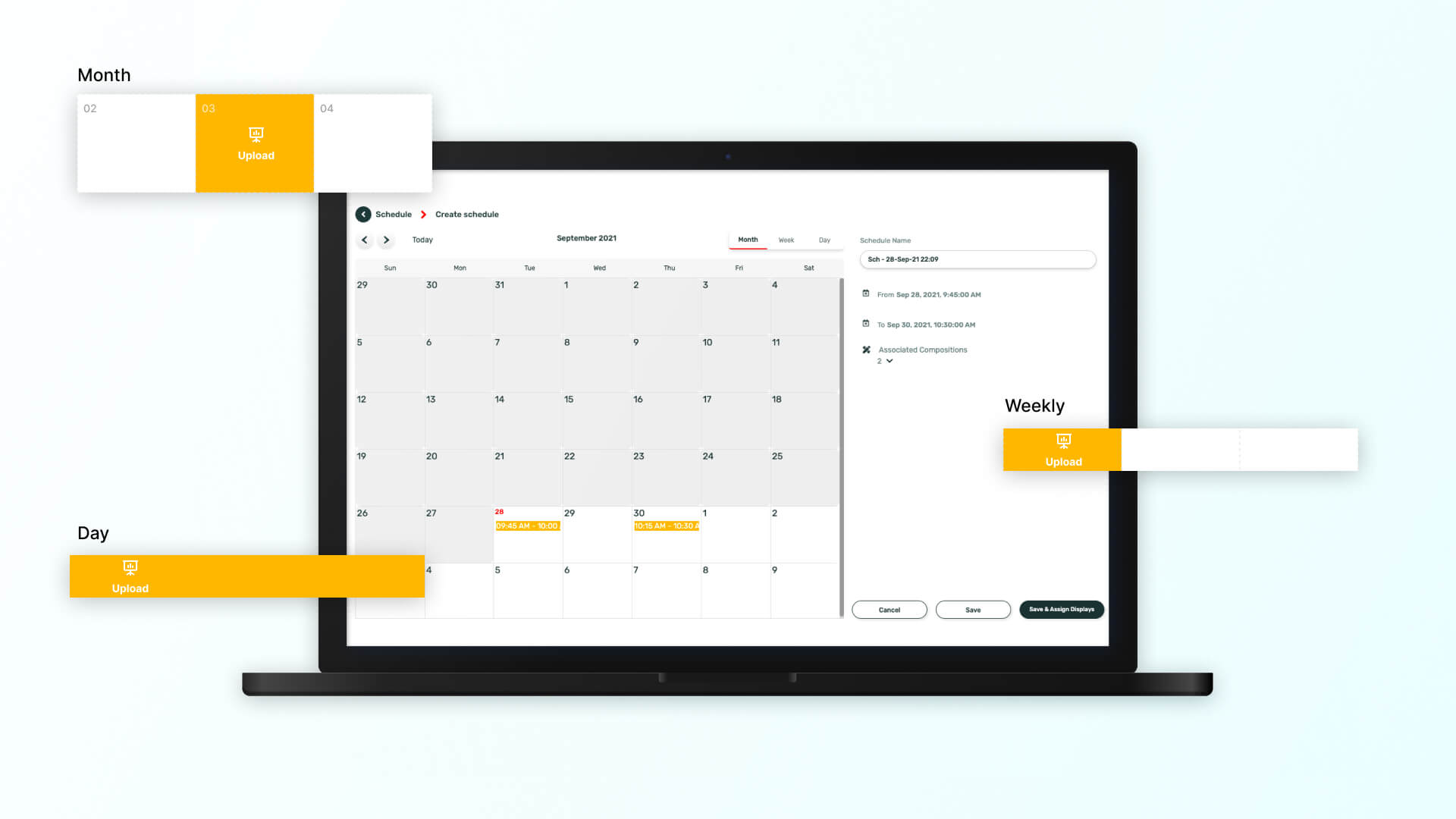
One of the best reasons to use a content management system for your digital signage is the content scheduling feature. Within the CMS dashboard, users can select a specific date or a time range and render the content to auto play at the designated time. With scheduling, the workload gets reduced tenfold. There is also little room for missed deadlines and missed opportunities.
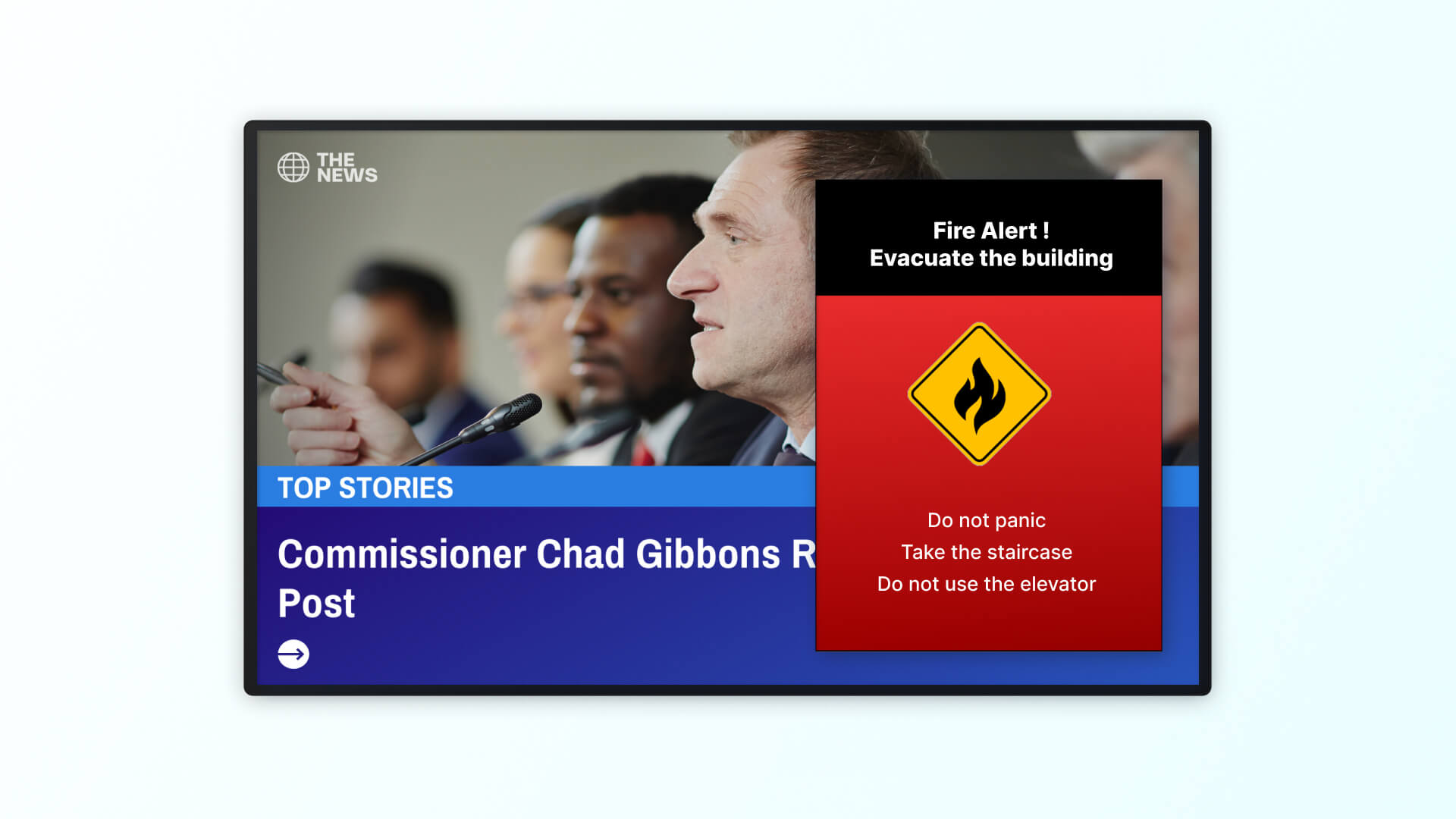
This feature is an extra perk that only some of the advanced digital signage software offers. A Quickplay or instant play feature allows the users to override any existing content and play spontaneous, ad-lib content.
An effective digital signage CMS must have a capability of advanced emergency alert functionalities, enabling administrators to immediately override scheduled content with critical emergency messages for disseminatting urgent information. For instance, if a fire alarm is triggered, the CMS can automatically show obvious escape routes on all screens in impacted regions, and automated content substitution improves security.
In a less grave scenario, retail outlets in a shopping mall can use Quickplay to run extemporary discount offers on days that receive unusually high footfalls.
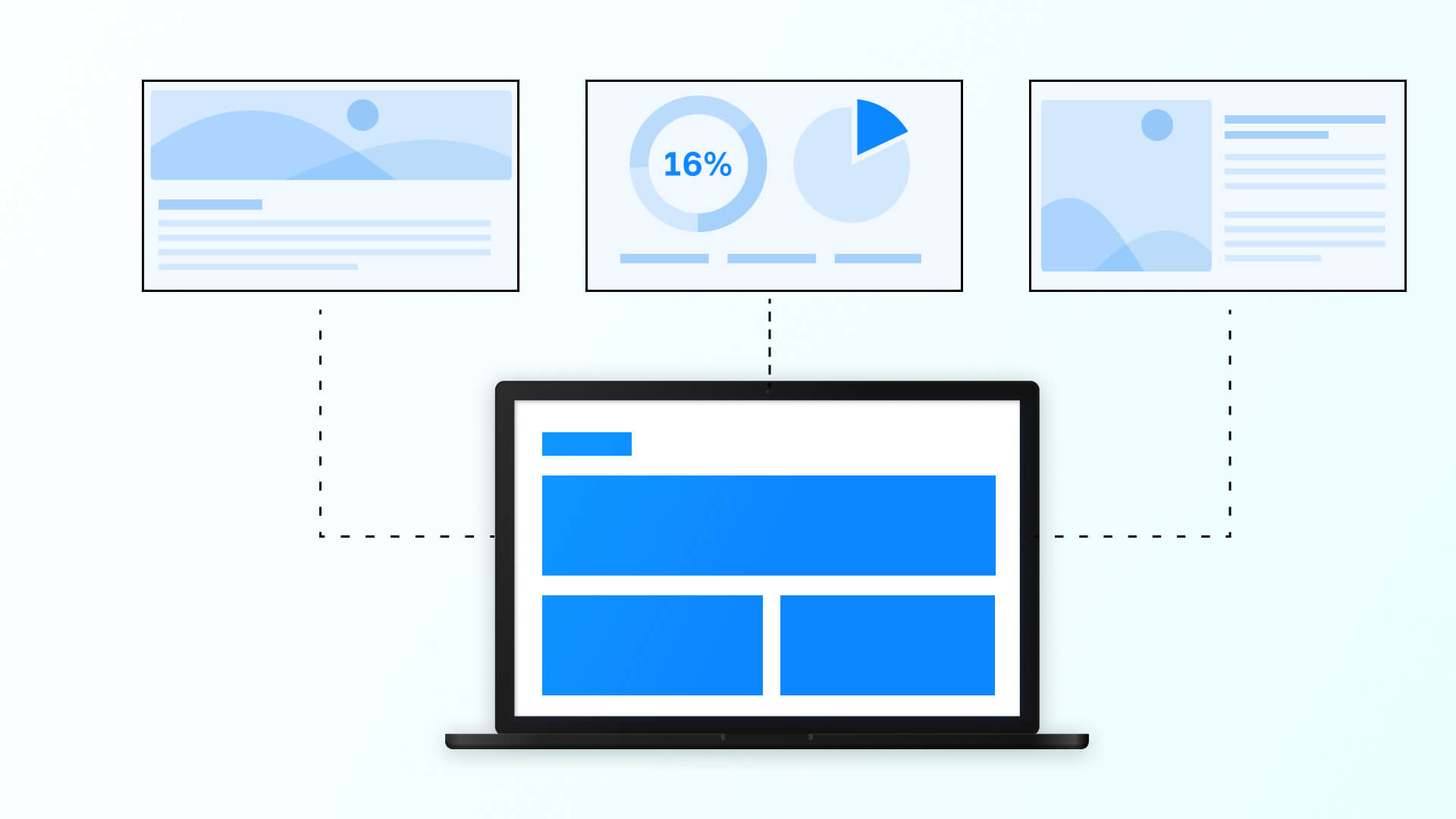
In the context of digital signage, the CMS is also a screen management system. Users can track and monitor display device activities.
Different software brands offer different simple to advanced screen management features. Screen grouping, diverse user role creation, and network report generation are some sophisticated features to look for in your screen content management system.
Let’s assume you are the owner of a large restaurant chain with restaurant outlets in 5 different states: New York, Texas, Colorado, Ohio & Washington. The menu of your restaurant can vary from one location to another. In such a case, making discrete changes in the content can become a tedious job.
But, with an advanced digital signage CMS software, you can group all your screens by location (New York- Group 1, Texas- Group 2, Colorado- Group 3, and so on.) So now, all you have to do is select your desired Screen Group and publish your content to all the displays in that group in one go.
A digital signage CMS is a very crucial tool for companies who want to optimize their content delivery over various screens. Businesses may increase operational effectiveness by creating, scheduling and managing digital screens with the help of digital signage CMS software.
Unlimited time and space for promotion:
A digital signage CMS provides numerous promotional alternatives, in contrast to conventional print advertising. Companies may show material around-the-clock to get the most exposure and audience. Digital signage systems offer versatility that static signage cannot.
Content updates that are simple and fast:
The capacity of a digital signage CMS to easily change material in real time is one of its greatest benefits. Businesses may rapidly change promotions, fix mistakes or adapt messaging based on audience response using cloud-based digital signage CMS software.
More creative liberty:
Compared to traditional banners, businesses may use a range of media forms with a digital signage CMS as it is significantly more engaging due to its greater creative versatility. For example, QSR chains may use rotating menu boards, fashion merchants can show off runway footage which increase engagement via imaginative storytelling.
Increasing customer focus and engagement:
According to studies, interactive material and moving pictures draw more attention than static signs. Businesses may use countdown clocks, motion images and customized messaging to attract clients with digital signage CMS software to promote more interactions by providing interesting and educational content.
Multifunctionality to optimize return of investment (ROI):
A CMS for digital signage may be used for more than simply advertising; it can be used for various business purposes like:
Displaying ads
Information and Wayfinding
Because digital signage CMS software is multifunctional, organizations may utilize the same screens for many departments and purposes, making it a high-return investment.
A content management system (CMS) simplifies the process of turning a process of turning a TV into digital signage. Both Smart and non-smart TVs can work as digital signage. However, to impart the Smart TV properties to a non-smart or dumb TV, the latter must be first connected to an external media player.
Once a television display configures the internet, the digital signage software application can be downloaded & installed on it. Users can then pair the TV with the content management system (CMS). Using the dashboard, users can publish desired content on the TV screen and manage the activities just like any commercial display.
Also read: How commercial digital signage is better than tv displays. digital signage vs tv displays
You can use these recommended practices to get the most out of your digital signage CMS:
Establish specific goals: To guide your digital signage CMS software strategy, decide on important objectives such as internal communication, consumer engagement or brand exposure.
Employ dynamic and engaging content: To keep viewers interested, use animations, videos and real-time updates in place of static images.
Optimize for readability and visibility: Make sure that the screen positioning, contrast and font size are all optimal for comfortable seeing both inside and outside.
Schedule and automate material: Make use of your digital signage tools to schedule playlists of material, guaranteeing pertinent messages and timely advertising.
Update and maintain often: Keep your information current and pertinent while keeping an eye on performance indicators to gradually improve your approach.
Like most other software, the digital signage CMS can be hosted either on cloud infrastructure or installed on your private on-premise physical IT infrastructure.
With a cloud-based content management system, users can access their dashboard from any geographic location (something like accessing an email). Once the users register themselves, they can generate a set of user IDs and passwords and use them to log into their CMS dashboards.
Most modern digital signage software are hosted on the cloud as it offers win-win flexibility to both the users and the vendors.
Benefits of using cloud-based CMS for digital signage:
Cloud solutions are suitable for: All small to large businesses in any industry.
In this arrangement, the software is deployed on the user’s private network and, a physical IT setup is required. The screen content management system is not remotely accessible.
Benefits of using on-premise CMS for digital signage:
On-premise solutions are suitable for: Large corporations having a well-established IT ecosystem.
Suggested read: When to use on-premise solutions
A quality CMS software brand will understand the importance of a user-friendly interface. Not everyone is tech-savvy, and not everyone needs to be. Having an easy-to-navigate software saves time and chances of error.
So how do you gauge if your digital signage software has a user-friendly interface?
A user-friendly software will have all features like:
Multi-user login: more than one user can concurrently access the dashboard from different devices.
User role modulation: The admin user should have the freedom to set access permissions for secondary users.
Flexible screen layouts: Your software should always allow you to create custom screen layouts so that you can fit multiple media in a single screen and optimize the use of the screen space
Organized view: One doesn’t have to put effort to recognize a user-friendly software. The very look of the CMS dashboard will do the charm. An easy-to-use application will not have too many buttons scattered everywhere on the dashboard; it will have an organized menu-like structure so that you know exactly what to click to bring about your desired effects.
The best way to understand why digital signage software is suitable for you is to see a live demo of the product. Most service providers like Pickcel will be more than happy to show you around.
It is important that your software be compatible with all types of digital signage hardware and operating systems (OS). If not all, it should, at the very least, support the most popular players like Android, Windows, macOS, Chrome OS, Linux, etc.
Having a hardware-neutral content management system for your digital signage allows a smooth transition to better and advanced hardware at any time without having to change the software.
Pickcel's software is hardware-neutral. It supports most popular systems like Android, Windows, Linux, macOS, LG WebOS, Samsung Tizen, etc. Check out the complete list of supported player hardware here.
Digital signage doesn’t always mean a large TV-like display; it can include anything from a tiny shelf display to a large video wall, or an interactive kiosk. So, while hunting for digital signage CMS for your business, it’s always better to go for a vendor that offers all kinds of solutions like interactive kiosk solution, DOOH solutions, etc.
Security is a factor that should not be compromised with, under any condition. Ask your solution provider if all communication channels are secured through SSL/https. Check if your data is encrypted during data transfer.
Software updates should be frequent (and free!). Ask your solution provider if they will charge you for any future software update. If so, you can immediately reject that vendor. Software updates are part of the service— it means the software is improved, and new bugs are fixed to offer a seamless user experience.
An effective content management system (CMS) makes use of AI-driven trends to improve efficiency, customization and optimization. Workflows are optimized and user engagement is increased with AI-powered features like smart labeling, data forecasting and AI-driven recommendations. AI-driven CMS solutions are more adaptive, expandable and efficient in managing digital material. Thanks to these clever features.
Read more on CMS Requirements.
Content management systems (CMS) have changed the way digital content is created and shared. They allow businesses and individuals to build and manage websites effortlessly without needing any coding expertise. With intuitive interfaces and customizable templates, setting up a professional online presence has never been easier.
As technology advances, CMS platforms will continue to enhance how we interact with the web. Whether for personal projects or business growth, now is the perfect time to explore and harness the power of CMS.
Well, there are many digital signage CMS solutions which have offline playback capabilities that allows the content to continue playing without even an active internet connection.
Yes. Be it pre-designed templates or drag-and-drop editors, an effective CMS provides all these tools to the content creators which helps them create eye-catching content without even having any knowledge in coding.
Version management and workflow controls, lower the possibility of unintentional content changes by allowing teams to monitor adjustments, turn into earlier versions and obtain managerial approval before publication.
To guarantee quick, scalable content distribution across several platforms, enterprise CMS systems include infrastructure based on the cloud, content-delivery systems, storage maximizing efficiency and headless CMS designs.


Dec 29 2021
10 min read
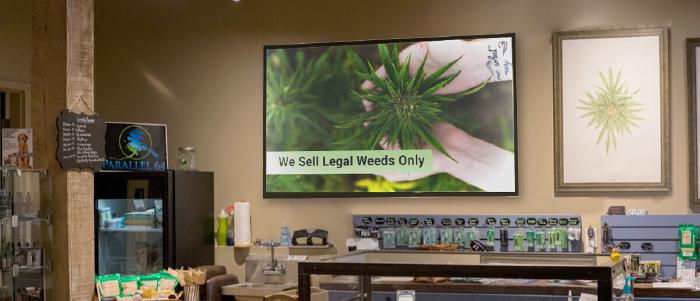
Dec 28 2021
5 min read
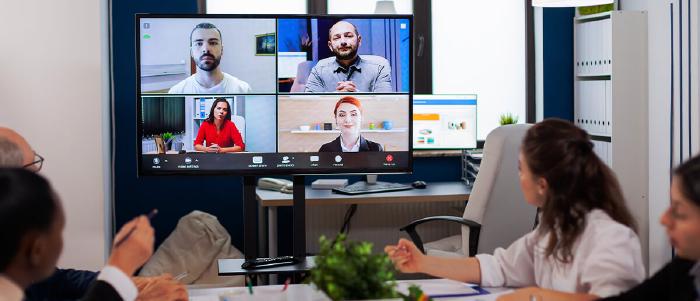
Dec 24 2021
7 min read
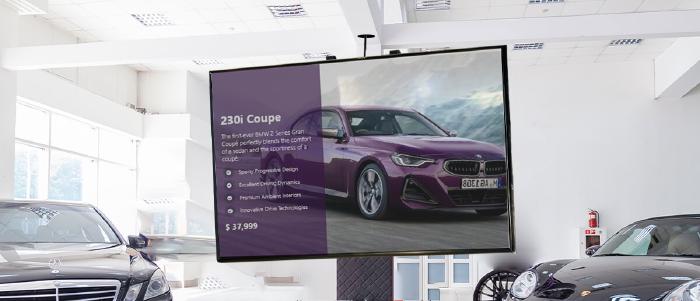
Dec 17 2021
9 min read
Take complete control of what you show on your digital signage & how you show it.
Start Free Trial Schedule My DemoSee How to Boost Sales & Branding with Digital Signage -40% Less Work, Faster Updates, Better Visibility
Unlock Exclusive Insights